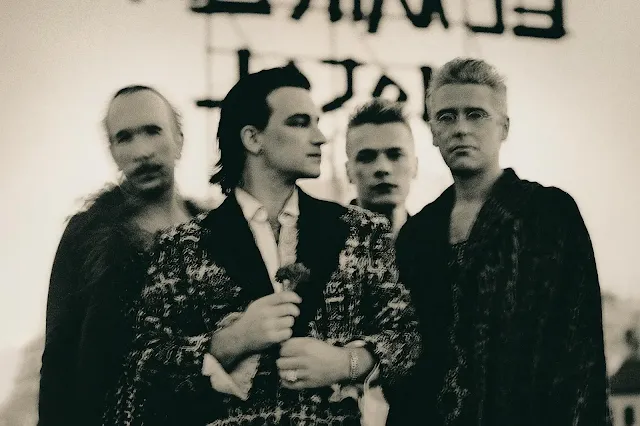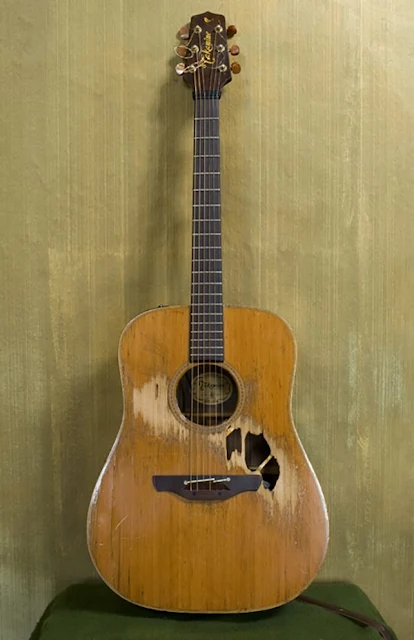As the 1980s drew to a close, U2 was already a band with significant achievements and a distinctive sound, known for their soaring anthems and politically charged lyrics. However, as the new decade dawned, they found themselves at a crossroads, seeking to reinvent and rejuvenate their music in the face of a rapidly changing musical landscape. This period of introspection and experimentation gave birth to "Achtung Baby", an album that stands as a testament to the band's willingness to dismantle their established identity and venture into uncharted territories.
Within this context, "Lady With The Spinning Head" emerges as a pivotal piece. While ultimately it was not included on the final album released, played a crucial role in the band's creative process during this era. The song is a confluence of new sonic textures, lyrical introspection, and innovative production techniques.
Before delving into the intricacies of "Lady With The Spinning Head", it's essential to contextualize the environment in which U2 was operating prior to "Achtung Baby". The late 1980s saw U2 riding high on the success of albums like "The Joshua Tree" and "Rattle and Hum". These albums had cemented their status as one of the world's leading rock bands, known for their anthemic sound and Bono's earnest, politically-charged lyrics. Despite this success, there was a growing sense within the band that their musical expression needed a new direction, a sentiment that became the catalyst for the sonic overhaul that was to come.
The end of the 1980s was a period marked by significant global changes. The fall of the Berlin Wall and the end of the Cold War era heralded a new social and political climate. These global shifts paralleled U2's own desire for change, inspiring them to step away from the anthemic rock that had defined their previous work. The band sought a sound that reflected the uncertainties and complexities of the new decade, leading them to experiment with alternative rock and electronic dance music influences.
The creation of "Achtung Baby" began in earnest in Berlin, a city itself symbolic of change and rebirth. The band chose the Hansa Studios, famous for its association with groundbreaking artists like David Bowie and Iggy Pop. Here, amidst the cultural and political ferment of a reunified Berlin, U2 began deconstructing their established sound. The initial sessions were challenging, marked by creative tensions and disagreements about the musical direction. However, it was within this environment of uncertainty and experimentation that "Lady With The Spinning Head" and other tracks began to take shape.
The story of "Lady With The Spinning Head" begins in the midst of U2's creative upheaval during the "Achtung Baby" sessions. This song, like many others from this era, was born out of a period of intense experimentation and exploration. It was a time when the band was actively seeking to redefine their musical identity, and this track emerged as a pivotal piece in this puzzle.
The inspiration for the song stemmed from a combination of personal experiences and the band's collective desire to explore new musical landscapes. Bono, the band's iconic frontman, often drew from his own life and the world around him for lyrical content, and this song was no exception. The imagery and metaphors in the lyrics reflect a sense of disorientation and fascination, themes that resonated with the band's experiences in the rapidly changing world of the early 1990s.
"Lady With The Spinning Head" was initially developed during jam sessions, a common practice for U2 where improvisation played a key role in song creation. These sessions were characterized by a free-form approach, allowing each band member to contribute and experiment without the constraints of a predetermined structure. The Edge, known for his innovative guitar work, experimented with new sounds and effects, adding a distinctive texture to the song.
The rhythm section, comprising bassist Adam Clayton and drummer Larry Mullen Jr., also played a crucial role in the song's development. Their willingness to adapt and explore new rhythmic patterns was crucial in shaping the track's dynamic and engaging tempo.
As the song evolved, it underwent several iterations, each adding layers and depth to its composition. The band worked closely with producers such as Daniel Lanois and Brian Eno, who were instrumental in guiding the song's development and helping U2 navigate their new sonic territory. Their input was vital in refining the song, ensuring that it aligned with the overall vision for "Achtung Baby".
Bono's lyrics in "Lady With The Spinning Head" are a tapestry of vivid imagery and introspective themes. The lyrics reflect a sense of disorientation and complexity, mirroring the band's own state of transition. Bono uses metaphorical language to convey feelings of confusion and fascination, which were prevalent themes in many of U2's songs from this period.
The song's lyrical content also demonstrates a shift from the overtly political and social commentary of earlier albums to a more personal and introspective style. This shift is indicative of the band's broader evolution during the "Achtung Baby" era, where personal introspection and existential themes became more prominent in their music.
"Lady With The Spinning Head" not only reflects the experimental nature of "Achtung Baby" but also influenced the sound of other tracks on the album. Elements of the song's composition can be heard in more prominent tracks like "The Fly" and "Ultraviolet (Light My Way)", showcasing its significance in the overall texture of the album.
This track's contribution to the album's sound highlights U2's creative process during this era. It serves as a testament to the band's ability to push musical boundaries and explore new artistic territories, setting a precedent for their future work.
In the broader context of U2's discography, "Lady With The Spinning Head" occupies a special place. It encapsulates the band's adventurous spirit during the early 1990s and stands as a symbol of their ability to reinvent themselves. While it may not have achieved the same level of commercial success as some of their other hits, its significance lies in its contribution to one of the most important phases in the band's history.
The legacy of "Lady With The Spinning Head" is multifaceted. It is a testament to U2's artistic courage, a key influence on their future work, and a pivotal piece in the puzzle that is "Achtung Baby". Its evolution and the legacy it has left behind offer a fascinating insight into one of the most transformative periods in U2's storied career.











